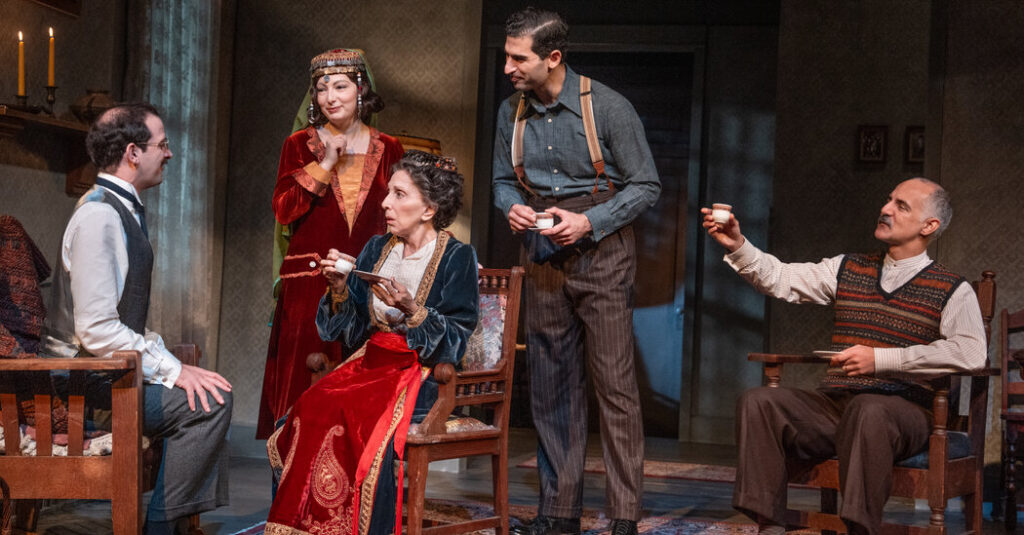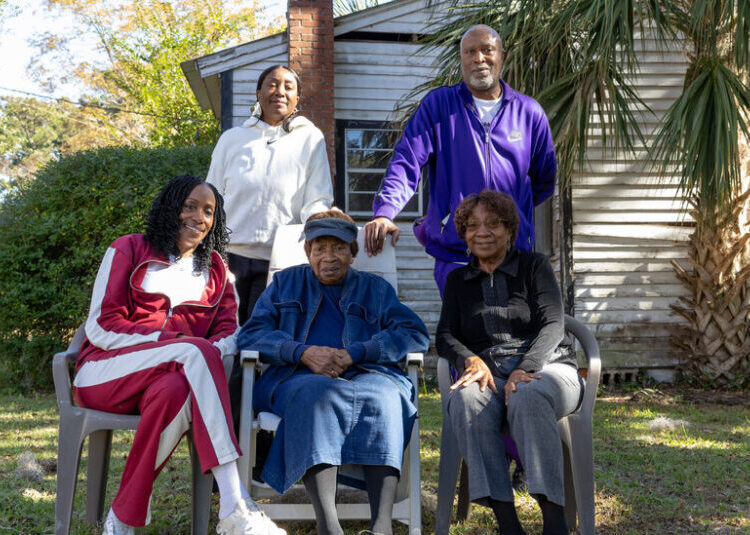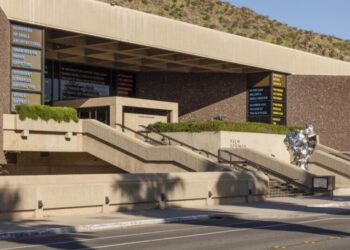We dissect nearly everything about Kim Kardashian, arguably the most famous woman in the country, including her eyebrow-raising performance of race. Yet we don’t often discuss how she relates to her Armenian American heritage. Or, at least, I don’t because I’m Venezuelan American, and the tally I keep is of public figures who do (or don’t) “represent” us well. If you’ve ever been handed a qualifier to your identity, I’m sure you have a list, too.
Even with such heady themes, “Meet the Cartozians,” Talene Monahon’s new play, presented by Second Stage Theater, never dries up into a lecture. And while the second act involves a celebrity modeled after Kardashian, it’s not a cheap gimmick: Its scope and ambitions are much larger, and its first act takes place over a century ago.
What it is, however, is a richly layered and deeply engrossing work and, under David Cromer’s direction, the best production I’ve seen all year.
In a real court case decided in 1925, Tatos Cartozian, an Armenian rug dealer in Portland, Ore., had his U.S. citizenship revoked by the government after years of living in the country. Cartozian (Nael Nacer) hires the Irish American lawyer Wallace McCamant (Will Brill), who advises that his best chance at regaining his legal standing is to argue that Armenians are white.
Tatos and his family — his son Vahan (Raffi Barsoumian), his daughter Hazel (Tamara Sevunts) and his elderly mother, Markrid (Andrea Martin) — don’t initially understand the concept. But having fled their people’s genocide under the Ottoman Empire, how much could this new adjective matter?
History can be a tragic punchline.
Small historical spoiler: Cartozian won, and when the curtain rises on the play’s second act, we’re in contemporary Glendale, Calif., which has the largest Armenian community outside of that country. That’s where a certain reality TV star has gathered a group of notable Armenian Americans for a holiday special on her show, “Meet the Cartozians.” (Though left nameless, Monahon imagines the celebrity as a direct descendant of Tatos.) Only she’s hours late, delayed by her glam team, and the others are growing impatient.
As required by the script, the cast doubles roles, which includes some well-deployed surprises. I’ll just say that Brill again plays an Irish American (Alan, a clueless production assistant), and Susan Pourfar turns up as Leslie, an Armenian American woman irritated by the host’s relationship to their community.
The way Leslie views it, Cartozian has distastefully leveraged racial ambiguity and the legal protections of whiteness without ever engaging with her roots. Some of her cohort agree, with caveats; others are overjoyed one of their own has made it this far. Alan, meanwhile, doesn’t know where Armenia is, let alone its people’s ethnicity, religion, race or struggles. Turns out, they can’t agree on those either.
But let me not turn this into a list of academic talking points, or make it seem as if only those knowledgeable about the Armenian experience could relate.
Monahon (“Jane Anger,” “The Good John Proctor”) has constructed a wildly funny piece that plays as pure entertainment, even as it weaves increasingly complex ideas. Its first act is a classic immigrant narrative, its second a thorny modern satire. As a diptych, she has avoided the trap of simple payoffs and doesn’t force the doubled roles into easy parallels. No one is a mouthpiece, and not even the real Cartozians are left off the hook.
The entire cast is exquisite, and Cromer’s sumptuous production at the Pershing Square Signature Center includes note-perfect scenic (Tatiana Kahvegian) and lighting (Stacey Derosier) design. Enver Chakartash’s period costumes are particularly beautiful during the family’s Christmas celebration in 1924. When similar regalia returns in the present, per the celebrity’s request, they feel pointedly like cosplay.
In a coda of unexpected grace, Monahon also extends an olive branch to that much-examined celebrity. The playwright understands that any marginalized person who cracks into the mainstream will be burdened with the weight of public — and community — scrutiny. Her question here is, how much of ourselves are we willing to chisel off in order to survive? And then, what will be left of us?
Meet the Cartozians
Through Dec. 7 at Pershing Square Signature Center, Manhattan; 2st.com. Running time: 2 hours and 30 minutes.
The post ‘Meet the Cartozians’ Review: Who Gets to Be White in America? appeared first on New York Times.




